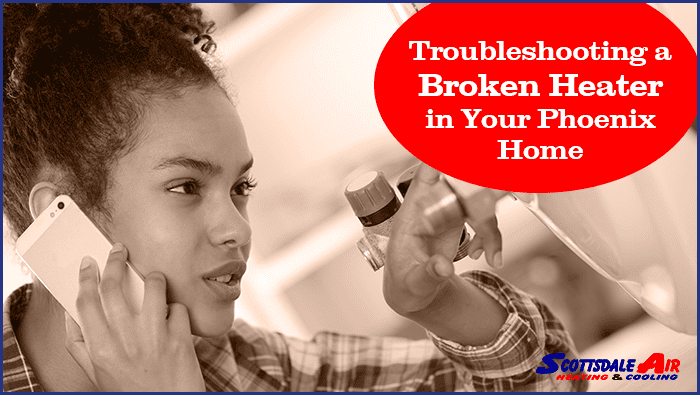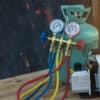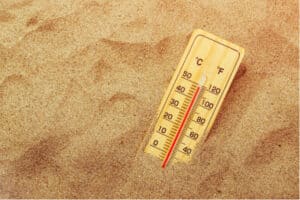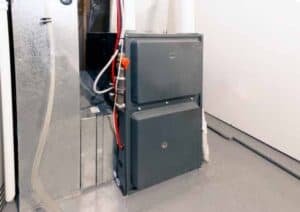Winter is not the time for your heater to malfunction. But did you know that 75% of no-heat calls during the winter are due to a lack of furnace or heat pump maintenance?
Do yourself a favor and don’t neglect your heating system.
Schedule regular maintenance and pay attention to early signs of problems.
Troubleshooting a broken heater isn’t complicated when you act fast.
What should you do if your heater is acting up?
Let’s explore the common causes of broken heaters and how you can troubleshoot them.
Inspect Your Thermostat
A lack of heat makes most homeowners assume they have a broken heater.
But in some cases, the issue is a faulty thermostat.
A well-functioning heater can’t perform its job if the thermostat isn’t operating.
Check your thermostat by increasing the heat by five to seven degrees.
If you don’t notice any changes in temperature within 30 minutes, your thermostat may be broken.
Try replacing the batteries. If you have an electromechanical thermostat, dust it off using a soft-bristle paintbrush or toothbrush.
Buildup and dust particles clog the thermostat and prevent it from communicating with your heater.
If everything else looks good, check the breaker connected to your thermostat.
Turn it off and on to ensure the fuse for the furnace is working.
Check the Air Filters
When it comes to broken heater troubleshooting, checking your air filters should be at the top of your list.
Most furnaces have a filter and blower. Furnace air filters are on the inside of the blower chamber.
The filter prevents pollen and dust from getting pushed into other compartments and circulated through your household air.
Clogged filters prevent steady airflow, which results in less heat in your home.
Dirty furnace filters also are a fire hazard and decrease indoor air quality.
Ignoring your air filters shortens your furnace’s lifespan.
Homeowners need to regularly clean and replace furnace filters. Some professionals recommend changing filters every 90 days to prevent severe furnace problems.
Look at the Pilot Light
If you have a furnace, you’ll want to check the furnace’s pilot light; it is a small flame that lights the burners. Newer versions may have an electric igniter instead of a pilot light.
If your pilot light goes off, your heater cannot function.
Pilot lights should always be burning a bright blue color. If you don’t see a flame or the flame is yellow, then it cannot generate heat.
Heavy drafts from severe winter storms can cause the pilot light to go out.
Dust and dirt buildup in the intake valve can prevent oxygen from keeping the pilot light burning.
Homeowners can reset a pilot light but should do so carefully.
Follow the instructions in the owner’s manual.
If you run into difficulties or prefer to delegate this job then it’s time to call a professional.
Oil Your Furnace Blower
The furnace blower needs to stay well-lubricated to function.
The blower draws in heat and redistributes it throughout the home. A poor-functioning blower equals a chilly house.
Stay ahead of potential blower problems by oiling your furnace once a year, preferably in the fall before winter weather strikes.
If your furnace is making unusual noises or creaking sounds, that is a sign your blower needs more oil.
Troubleshooting a Broken Heater: Call the Pros
Troubleshooting a broken heater can be overwhelming. But that’s why the professionals are here.
We are your go-to team for heater repairs near Phoenix. From installation to maintenance, you can rely on our technicians to keep your furnace running all winter long.
Browse our heating services and learn more about what our team can do for your Scottsdale home.
Time to schedule your HVAC System Tune-Up? Contact the Surprisingly Affordable HVAC experts at Scottsdale Air Heating & Cooling to get more information here: 480-359-7141 OR request an appointment online.
Read more articles about Heating & Cooling:
- Essential HVAC Repairs You Can’t Afford to Put Off
- Top 5 Heater Maintenance Tips
- Tips for Smart Thermostats: Buying, Maintenance, and Repair








